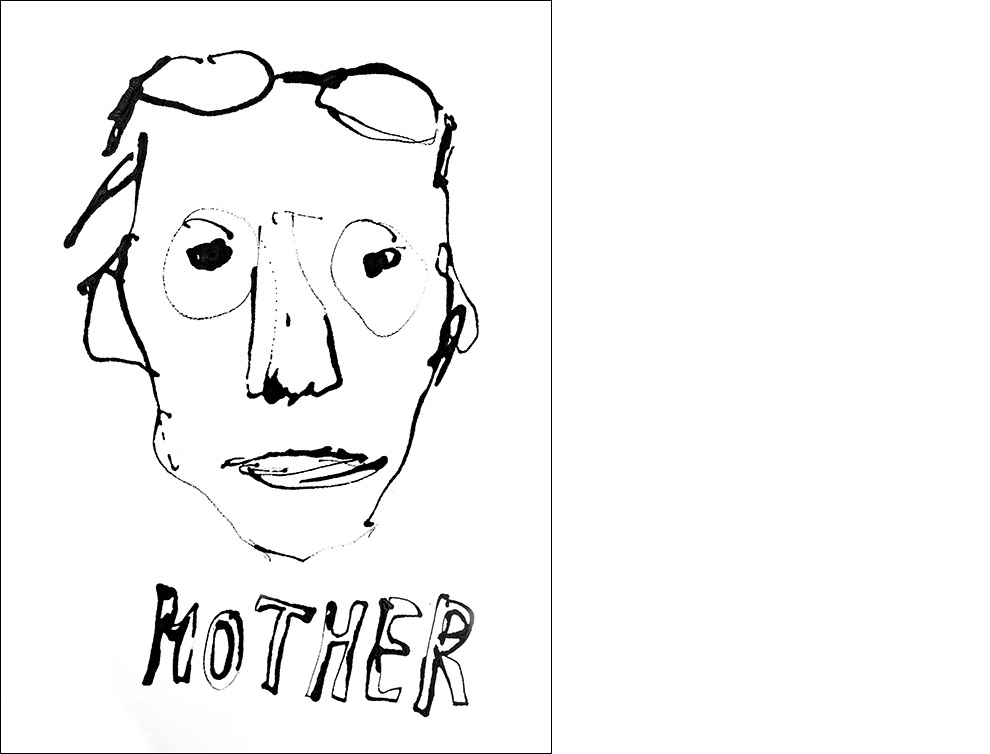
"Mother"
Drawing on paper / 2025
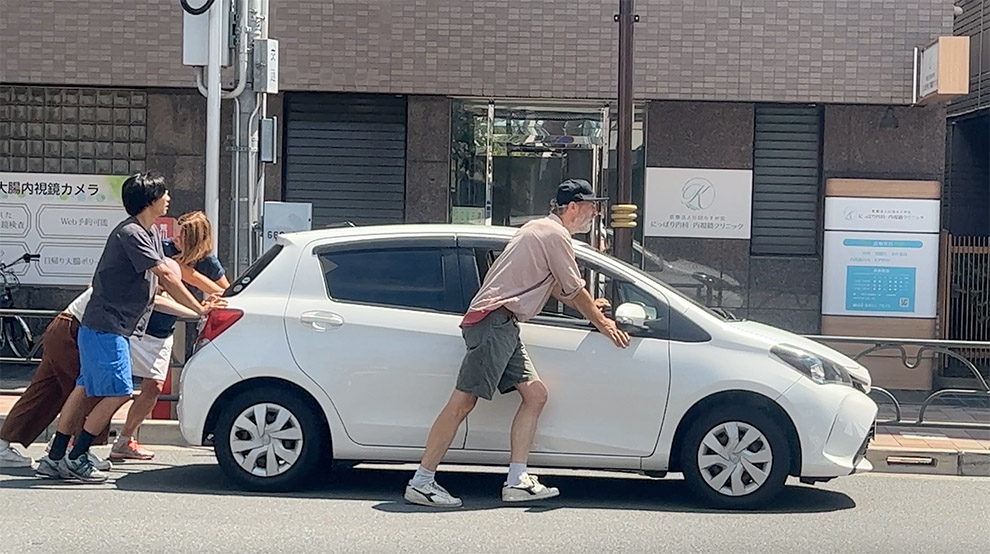
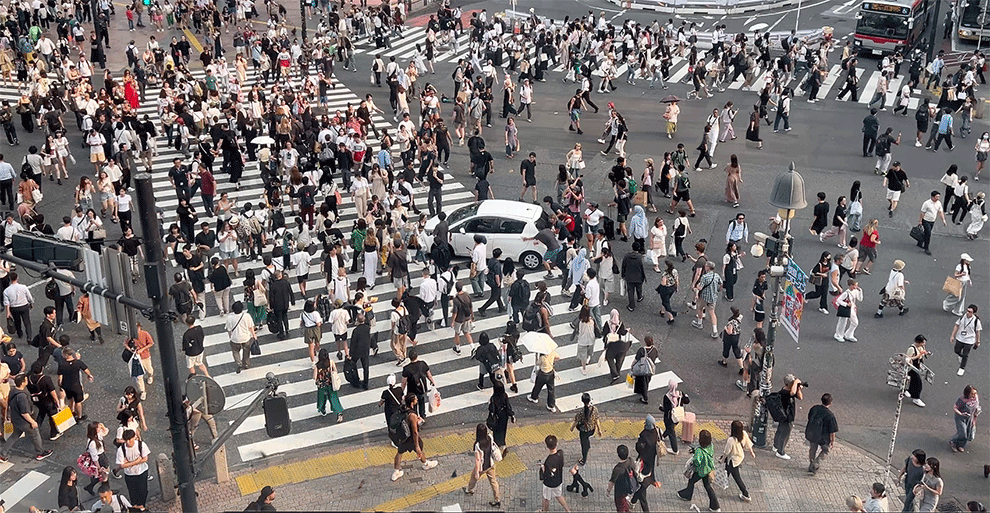
"AUTOINKOGNITO"
AUTOKONGNITO is a film by Manfred Grübl about the relationship between people and cars and a city
For my work in Tokyo, I want to push a car through the city. I will push the car myself, and the intention is that I will receive assistance from passers-by. The intervention/film leads through different urban structures. From a rural single-family house structure with small alleys where houses are lined up next to each other, to larger housing complexes, to a high-rise structure with neon signs, where the car then comes to a standstill at the Shibuya intersection. Movement, structure and the people who move within such systems are very often an essential part of my work. Part of the artistic work is the intervention in Tokyo and a film that is intended to function as a stand-alone work.
Für meine Arbeit in Tokio möchte ich ein Auto durch die Stadt schieben. Das Auto wird von mir geschoben und die Absicht ist, dass ich von Passant*innen Unterstützung bekomme. Die Intervention/der Film führt durch unterschiedliche Stadtstrukturen. Von einer ländlichen Einfamilienhaus Struktur mit kleinen Gassen wo Haus an Haus aneinander gereiht sind über größere Hausverbände bis hin zu einer Hochhausstruktur mit Leuchtreklame wo dann das Auto an der Shibuya Kreuzung zum erliegen kommt. Bewegung, Struktur und die Menschen die sich in solchen Systemen bewegen sind in meiner Arbeit sehr oft ein wesentlicher Bestandteil. Teil der künstlerischen Arbeit ist die Intervention in Tokio und ein Film, der als eigenständige Arbeit funktionieren soll.
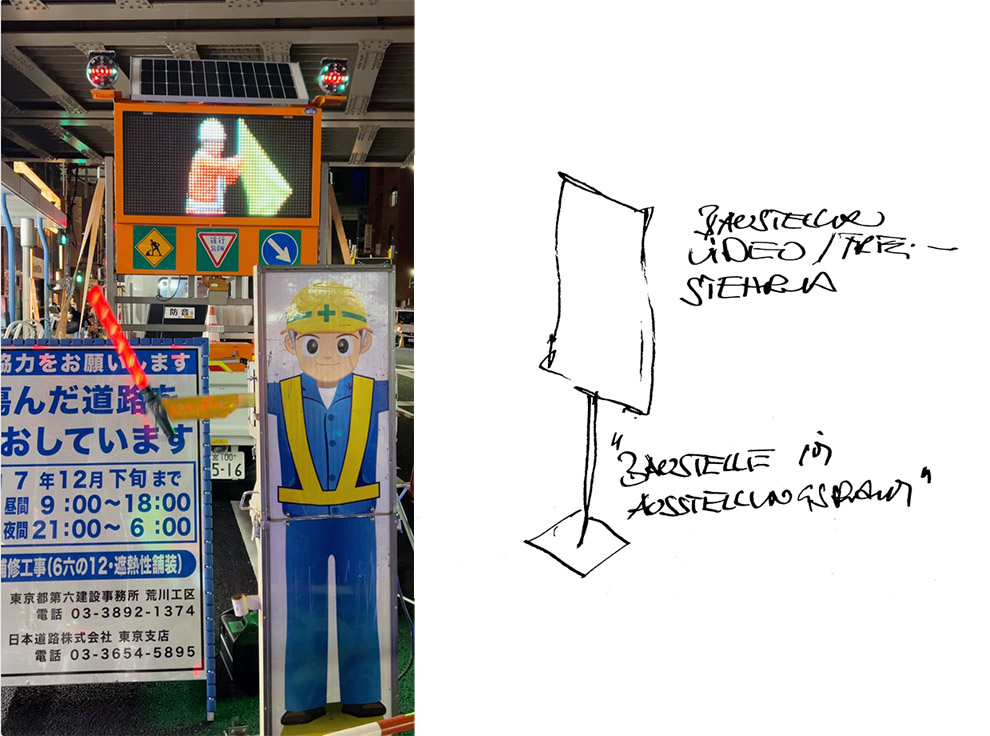
"BAUSTELLE IM AUSSTELLUNGSRAUM"
Video / Installation
The video shows the barriers and warning signs at a construction site in Tokyo Nishinippori. In Japan, marshals are used to keep everything flowing smoothly. There is hardly a place that is not regulated, either by floor markings, LED signs, loudspeakers or marshals.
Das Video zeigt die Absperrung und Warnzeichen einer Baustelle in Tokio Nishinippori. In Japan versucht man durch Ordnungspersonen alles im Fluss zu halten. Es gibt kaum einen Orte der nicht geregelt ist. Entweder durch Bodenmarkierung, LED Zeichen, Lautsprecher oder Ordnungspersonen.
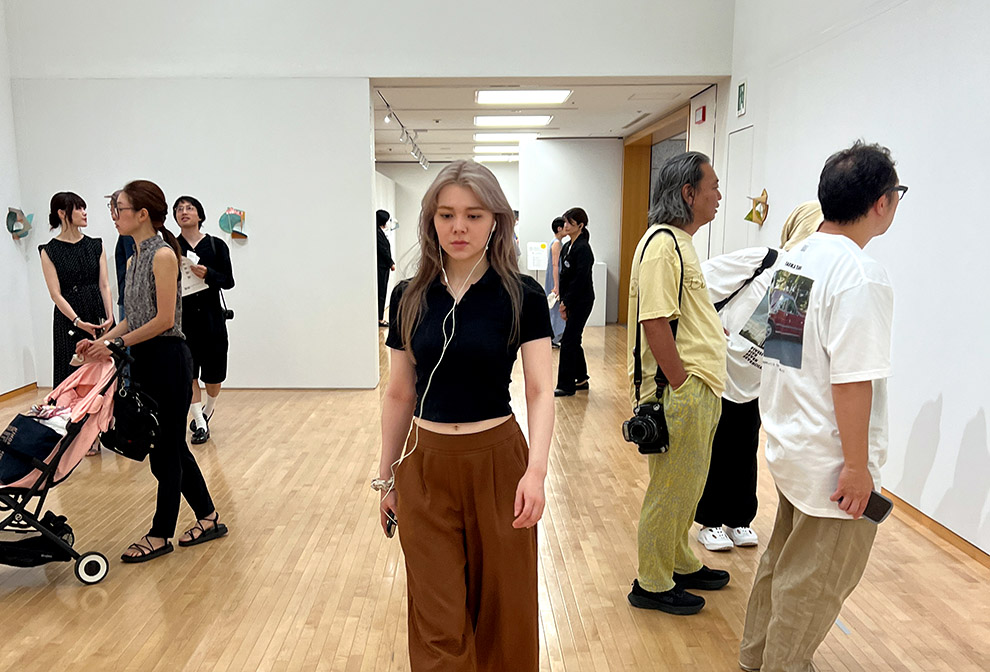
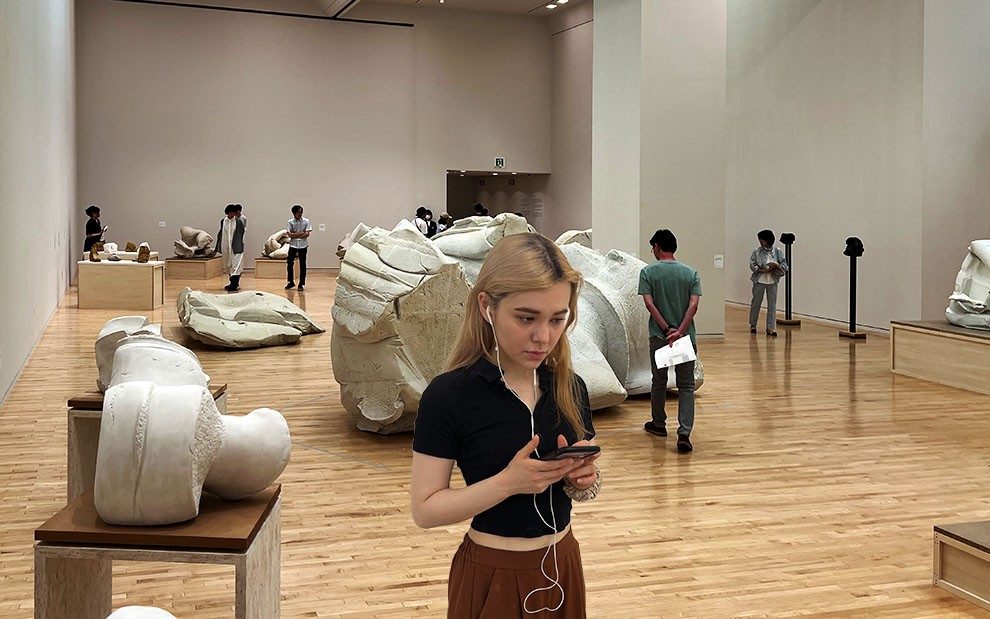
"ART TALK" by Manfred Grübl at the Exhibition Kenjiro Okazaki, Performer: Mizuki Jones
Museum of Contemporary Art Tokyo (MOT)
Art Talk is a performance with one performer who is in an ongoing exhibition at the Museum of Contemporary Art Tokyo and ties to explain her surroundings to another person on the phone. The performer is equipped with telephone and headset. At the beginning, the person appears in the room. The intervention ends after a usual viewing time, which is needed for an exhibition of a certain dimension. When you talk on the phone with a headset, it is as if you go into another room, disconnected from the activities that are going on in the real space. Conversely, it is also absurd for the other visitors to the exhibition, because this disconnection also affects gestures and facial expressions. It is a space-in-space situation that changes the environment or dynamics of the exhibition leading the visitors into another realm of experience.
KENJIRO OKAZAKI is not only innovative in painting and sculpture, but also in a wide range of fields including architecture, environmental cultural sphere initiative, children’s books, and robotics, Okazaki has also been active as a culture critic. At the root is his conception and practice of zökei* (plastic arts) as a force that recon- nects our perception and the world.

"WHAT COLOR IS IT TODAY"
Lambda Print / gerahmt Format 70x100 cm
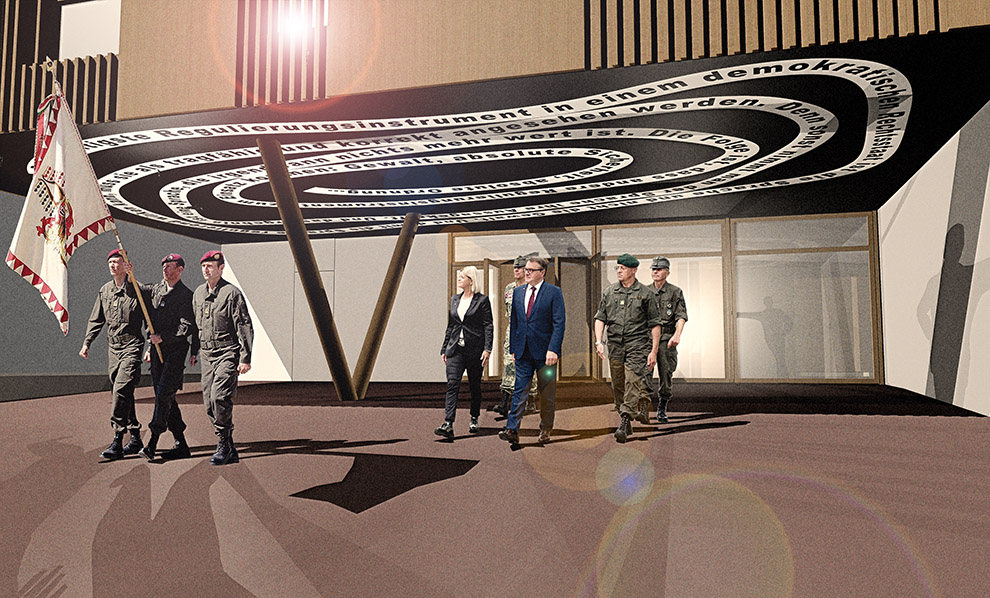
WORTSCHLEIFE
Kunst am Bau I Khevenhüller-Kaserne, Klagenfurt
So wie sich das Neugebäude an die umliegenden Baukörper anpasst nehme ich mit meiner Arbeit Bezug auf Historische Gegebenheiten die abgeglichen werden mit unserer Gegenwart. Ich arbeite dabei mit einen Text von Cynthia Fleury. Eine französische Philosophin und Psychoanalytikerin die sich mit ethischen Fragen auseinander setzt. Die von mir projektierte Textschleife nimmt nicht nur Bezug auf eine politische Sprache sondern fordert eine bewußt gesellschaftliche Auseinandersetzung. Die propagandistische Sprache der NSDAP hat sich 1920 aus einen 25-Punkte Programm entwickelt das sich am Ende auf ein faschistisches Programm von nur einer Person Adolf Hitler reduzierte. Im Zeitalter der sozialen Medien und Algorithmen hat man manchmal den Eindruck es werden einen Entscheidungen abgenommen. Es ist aber hingegen beeinflusst und gesteuert von wenigen Personen die solche Systeme in der Hand haben. Eine andere Form von Propaganda die sich über eine KI legitimiert. Den eine Maschine die völlig unabhängig agiert ohne Emotionen muss ja recht haben. In Wahrheit ist so ein System aber leicht manipulierbar, weil es in ein kapitalistischen System integriert ist.
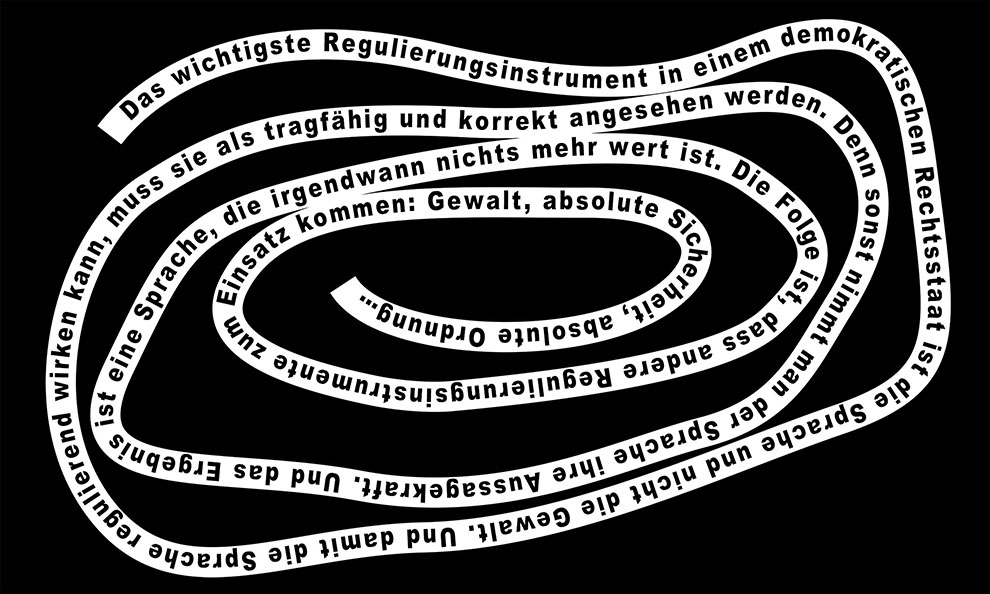
WORTSCHLEIFE
Das wichtigste Regulierungsinstrument in einem demokratischen Rechtsstaat ist die Sprache und nicht die Gewalt. Und damit die Sprache regulierend wirken kann, muss sie als tragfähig und korrekt angesehen werden. Denn sonst nimmt man der Sprache ihre Aussagekraft. Und das Ergebnis ist eine Sprache, die irgendwann nichts mehr wert ist. Die Folge ist, dass andere Regulierungsinstrumente zum Einsatz kommen: Gewalt, absolute Sicherheit, absolute Ordnung... (Text: Cynthia Fleury)
Cynthia Fleury, geboren 1974, ist Philosophin und Psychoanalytikerin. Sie ist Professorin für Geisteswissenschaften und Gesundheit am Conservatoire National des Arts et Métiers in Paris und Professorin für Philosophie am Hospital Sainte-Anne der GHU Paris für Psychiatrie und Neurowissenschaften. Fleury ist Mitglied der französischen Nationalen Beratungskommission für Ethikfrage
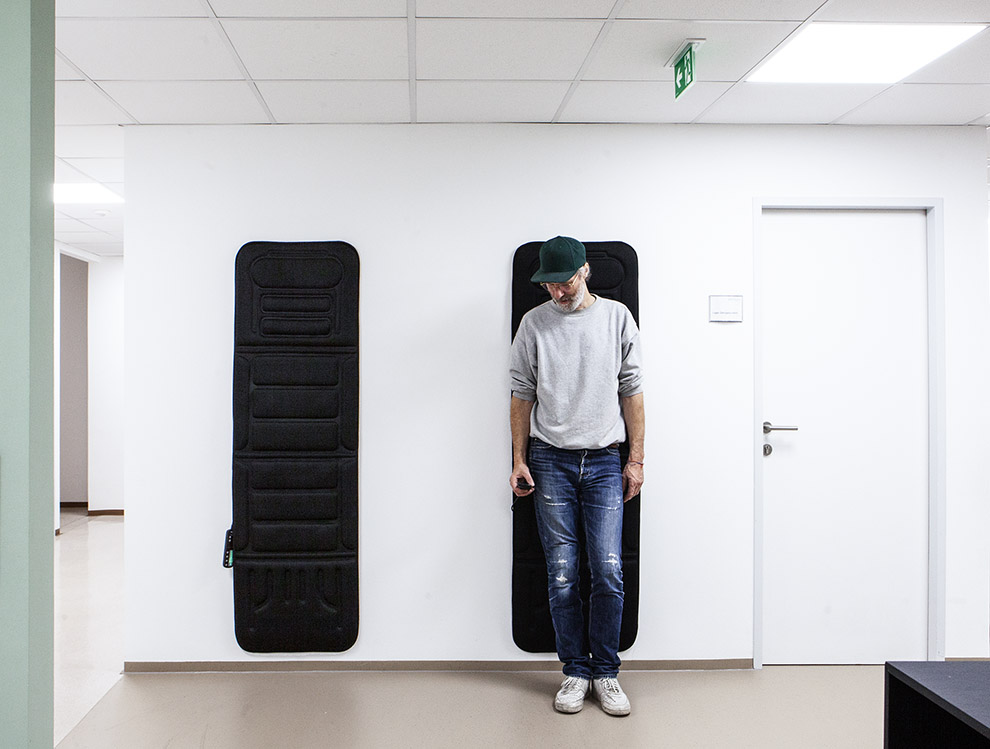
"Massagematten"
Installation Bürogebäude Proges, Linz
Im Foyerbereich eines Bürogebäudes werden Massagematten installiert. Sie sind gedacht als Entspannungs- und Erholungsnischen - man kann sich massieren lassen und die Zeit für Telefonate und Internet Research nutzen. Die/der Anwender*innen sind Teil der künstlerische Arbeit.
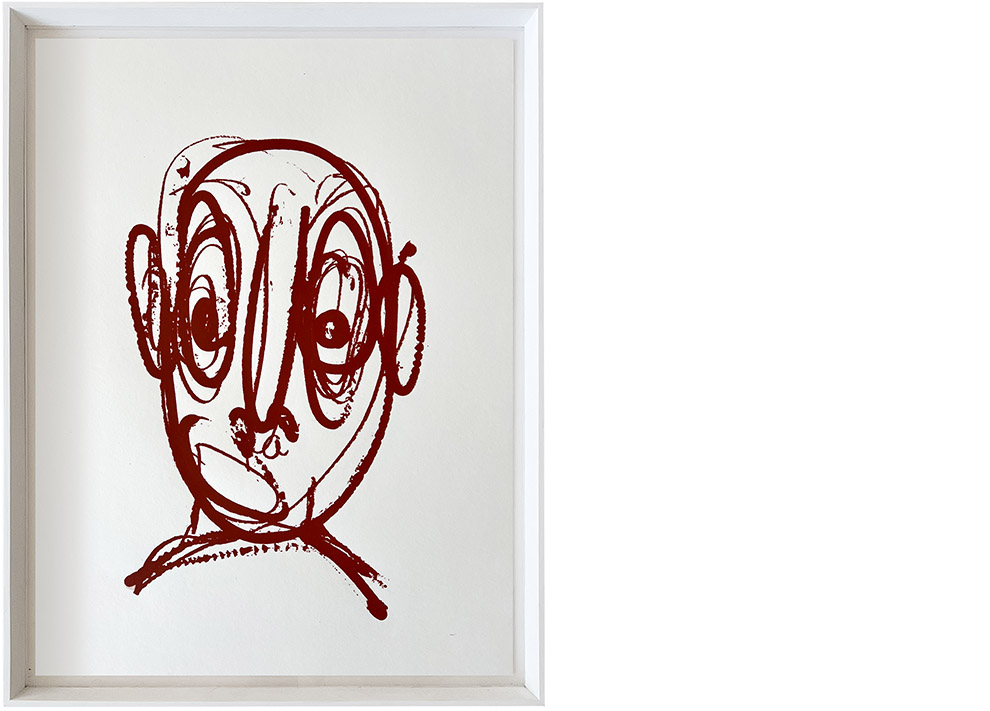
"draw the audience", neue Edition
Zeichnungen auf Papier und unterschiedlichen Materialien
Drawings from the audience sind Zeichnungen, die durch Beobachtungen von Ausstellungsbesucher*innen entstanden. Material und Linienführung stehen in Dialog mit der jeweiligen Person.
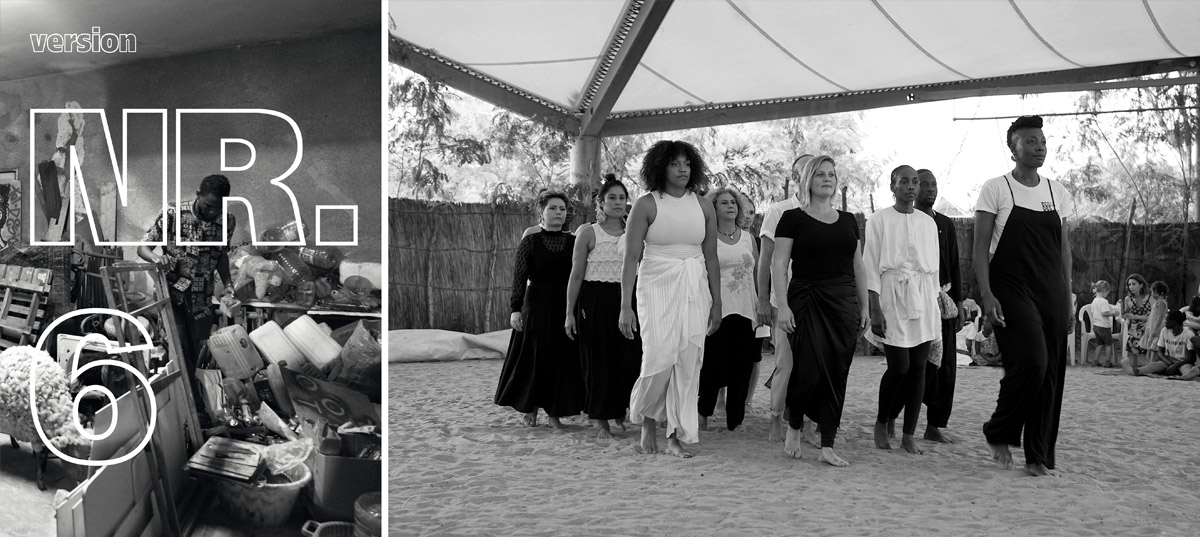
VERSION 6 magazine presentation
KENU, LE PALACE INFORMEL, PARTCOURS12 / 8 December at 7 pm / cité africa n°1, Ouakam, 12300 Dakar / DJ ACT IBAAKU
VERSION est un magazine autrichien consacré à la production artistique et culturelle contemporaine, qui traite des questions liées aux approches et aux conditions des stratégies artistiques. Le numéro actuel VERSION 6 présente un aperçu de la scène artistique actuelle à Dakar. Yasmine Eid-Sabbagh parle de son expérience en tant qu'artiste à la documenta 15 et de sa pratique de lier l'art et la vie quotidienne à Dakar. Alibeta Sarr et Ibaaku présentent leur espace artistique KENU, organisé de manière collective. Nous avons eu l'occasion de nous entretenir avec Alesandra Seutin au sujet de l'Ècole des Sables, un centre de danse africaine traditionnelle et contemporaine. La Raw Material Company, l'une des plus importantes institutions culturelles contemporaines, est présentée par Fatima Bintou Rassoul Sy, Delphine Buysse et Ibrahima Thiam. En outre, nous avons pu publier un entretien de Zain Raza avec Noam Chomsky sur la guerre en Ukraine. Le groupe Kriegsbilder évoque les spécificités de la création cinématographique ukrainienne et la situation de l'industrie cinématographique en Ukraine. Hans Schabus et Isa Rosenberger se sont entretenus avec nous de leurs travaux et de leur approche artistique respective. Les inserts proviennent de l'artiste ukrainien Mark Chehodaiev, de l'artiste chilienne Patrizia Domínguez et du département d'art spécifique au lieu de l'Université des arts appliqués de Vienne.
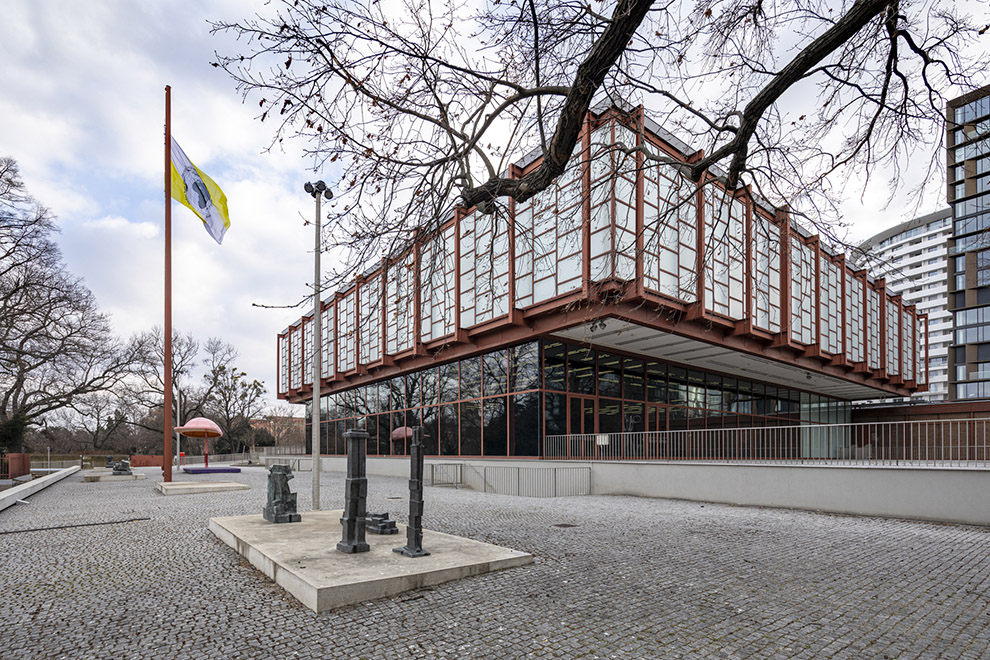
Public Matters / Contemporary Art in the Belvedere Garden / 13 May 2023 - 1 October 2023 / Manfred Grübl, Anna Jermolaewa
"HALBMAST" / "Jede*r hat das Recht auf Leben, Freiheit und Sicherheit der Person" ist der Allgemeinen Erklärung der Menschenrechte von 1948 entnommen und dieser Satz umfaßt die Weltkugel auf der Flagge. Grundrechte sind ein verfassungsgesetzlich gewährleistetes Recht. Die Menschenrechtskonvention ist in der Regel auch in die Verfassung mit eingeschrieben. Für die Fahne und unser Projekt haben wir bewusst dieses fundamentale Grundrecht gewählt, weil es jedem Menschen zusteht. Das Recht auf Leben ist die Vorbedingung für die Ausübung aller anderen Menschenrechte und daher eine zentrale Garantie, unabhängig von der Herkunft. Die Flagge im Belvedere 21 ist ein weitreichendes Signal und fordert die Wahrung der Grundrechte, ohne die unsere demokratischen Werte ohne Fundament sind.
Art – a public matter? Ever since their opening to the general public in the 1780s, the Belvedere Gardens have been used extensively as places for recreation and communality. The occasion of the 300th anniversary of the completion of the Upper Belvedere is a good opportunity to emphasize that they are clearly also places of art. From May through September, an extensive contemporary sculpture project complements the Baroque sculpture program at the Belvedere’s three locations. Site-specific as well as existing works by international and local artists will connect all of the museum’s gardens along a path – from the main courtyard of the Lower Belvedere and its Privy Garden to the grand Baroque gardens of the Upper Belvedere and the modernist sculpture garden of the Belvedere 21 – highlighting how the gardens organically grew into an ensemble. Public Matters follows an expanded concept of sculpture that includes time- and process-oriented approaches. As a critical homage, the show addresses the representation of power in the past and present as well as its transformation over time. In particular, the focus is on aspects of the public and the public sphere that emerge with and through art. The project is accompanied by a comprehensive publication featuring essays and texts on the works on display. With works by Thomas Baumann, Renate Bertlmann, Louise Bourgeois, Verena Dengler, Carola Dertnig, VALIE EXPORT, Wil Frenken und Fria Elfen, Thomas Geiger, Roland Goeschl, Dan Graham, Thomas Houseago, Alfred Hrdlicka, Iman Issa, Anna Jermolaewa und Manfred Grübl, Kapwani Kiwanga, Brigitte Kowanz, Hans Kupelwieser, Marko Lulić, Goshka Macuga, Hans Op de Beeck, Ingeborg G. Pluhar, Maruša Sagadin, Toni Schmale, Kateřina Šedá, Socratis Socratous, Kara Walker, Lawrence Weiner, Lois Weinberger, Franz West, Fritz Wotruba, Heimo Zobernig Curators: Christiane Erharter, Georg Lechner, Sergey Harutoonian, Axel Köhne, Claudia Slanar, Luisa Ziaja Assistant curators: Miroslav Halak, Andrea Kopranovic